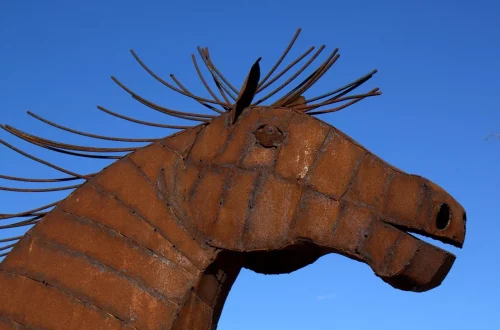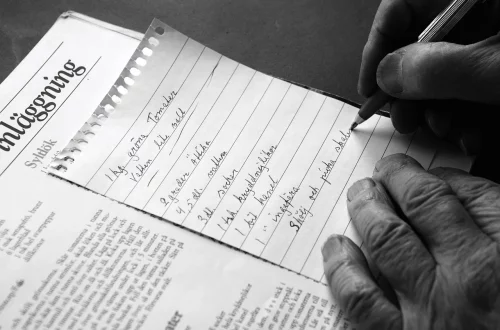
The True Story Behind Bourbon: Crafting a Timeless American Spirit
Bourbon whiskey is more than just a drink; it is a symbol of American craftsmanship, tradition, and culture. Originating from the fertile lands of Kentucky, this spirit has garnered a reputation that transcends borders, embodying the spirit of the American South. The process of crafting bourbon requires a deep understanding of ingredients, fermentation, distillation, and aging, each step contributing to the rich flavors that aficionados have come to love.
As we delve into the world of bourbon, it’s essential to appreciate the meticulous artistry and historical significance behind this iconic spirit. From the grains that are carefully selected to the barrels that age the whiskey, every element plays a critical role in the final product. Whether enjoyed neat, on the rocks, or in a cocktail, bourbon offers a distinctive experience that reflects the heart and soul of its makers. It is not merely a beverage; it is a celebration of American heritage, a story that continues to be written in distilleries across the nation.
The Origins of Bourbon: A Historical Perspective
The origins of bourbon whiskey are steeped in mystery and folklore, with various legends surrounding its creation. One prevalent story attributes the invention of bourbon to a Baptist minister named Elijah Craig, who is said to have developed the distillation process for corn whiskey in the late 18th century. This narrative, while charming, is just one of many tales that contribute to bourbon’s rich tapestry of history.
What is known is that bourbon must be made from at least 51% corn, a requirement that distinguishes it from other whiskies. The use of corn is significant; it lends a sweetness that is characteristic of this spirit. The grains used in bourbon production are crucial not only for flavor but also for the fermentation process, which transforms sugars into alcohol.
The early distillers in Kentucky benefited from the region’s abundant natural resources, including pure limestone water, which is essential for producing quality whiskey. This geographical advantage has played a pivotal role in the development of bourbon, as the unique mineral content of the water influences the taste. As the late 19th century approached, bourbon began to gain recognition, and its popularity surged, further solidifying its place in American culture.
The Bottled-in-Bond Act, established in the late 1800s, marked a significant milestone for bourbon. This legislation set strict standards for the production of whiskey, ensuring authenticity and quality. Distillers had to adhere to specific guidelines, including aging the spirit for a minimum of four years in a federally bonded warehouse. Such regulations helped to elevate the status of bourbon, allowing it to be recognized as a distinct American product.
Through the years, bourbon has evolved, embracing both tradition and innovation. Today, distillers experiment with various grains, aging techniques, and flavor profiles, yet the essence of bourbon remains rooted in its historical beginnings. This blend of heritage and modernity continues to attract enthusiasts and newcomers alike, ensuring that the story of bourbon will endure for generations to come.
The Crafting Process: From Grain to Glass
Crafting bourbon is a meticulous process that requires precision, patience, and an unwavering commitment to quality. The journey begins with selecting the right grains, typically a combination of corn, rye, barley, and sometimes wheat. Each grain contributes its unique character to the final product, and the proportions can significantly alter flavor profiles.
Once the grains are chosen, they are ground into a coarse meal and mixed with hot water in a mash tun. This process, known as mashing, converts the starches in the grains into fermentable sugars. Yeast is then added to the mash, initiating fermentation. This stage is critical, as the yeast consumes the sugars and converts them into alcohol, producing a wash with an alcohol content of around 6-8%.
Following fermentation, the wash is distilled using pot stills or column stills. Distillation separates the alcohol from the wash, concentrating the flavors and increasing the alcohol content. The distillation process can vary significantly between distilleries, with some opting for a double distillation for a smoother finish.
After distillation, the spirit is placed in new charred oak barrels for aging. The aging process is where bourbon truly develops its character. As the whiskey interacts with the wood, it absorbs compounds that impart flavors such as vanilla, caramel, and spice. The charred interior of the barrel also acts as a natural filter, mellowing the spirit and adding complexity.
The length of aging can vary, but bourbon must be aged for a minimum of two years to be labeled as such. Many distillers opt for longer aging periods, allowing the whiskey to develop deeper flavors. Climate plays a significant role in this process, as temperature fluctuations cause the whiskey to expand and contract within the barrel, enhancing its interaction with the wood.
Once the aging process is complete, the bourbon is filtered and often diluted to the desired bottling strength, typically around 40% alcohol by volume. The final product is then bottled and labeled, ready to be enjoyed by enthusiasts around the world. This intricate process, from grain to glass, showcases the dedication and artistry that go into crafting a timeless American spirit.
The Cultural Significance of Bourbon in America
Bourbon whiskey is woven into the cultural fabric of America, symbolizing not just a beverage but a way of life. Its deep roots in American history have made it a source of pride for many, particularly in the Southern states where it is predominantly produced. Bourbon is often celebrated as the “official spirit of America,” reflecting the nation’s heritage and craftsmanship.
In addition to its historical significance, bourbon has become a cultural icon, influencing everything from music and art to cuisine. The connections between bourbon and Southern culture are evident in various aspects of life, including social gatherings, celebrations, and even culinary traditions. Many classic Southern dishes pair beautifully with bourbon, enhancing the dining experience and showcasing the spirit’s versatility.
Moreover, bourbon has a unique ability to bring people together. Whether shared among friends at a bar or enjoyed during a family gathering, this spirit fosters connections and creates lasting memories. Bourbon tastings and festivals have become popular events, drawing enthusiasts from all over to explore the diverse range of flavors and brands available. These gatherings not only celebrate bourbon but also highlight the artistry of the distillers and the stories behind their craft.
The bourbon industry has also made significant contributions to the local economies of distilling regions, creating jobs and supporting communities. Many distilleries offer tours and tastings, attracting tourists and providing an opportunity for visitors to learn about the history and craftsmanship behind the spirit. This tourism aspect has further solidified bourbon’s place in American culture, turning it into a symbol of hospitality and tradition.
In recent years, the rise of craft distilleries has introduced a new wave of innovation and creativity to the bourbon scene. Small-batch producers and experimental distillers are pushing the boundaries of traditional bourbon-making, exploring unique flavor profiles and aging techniques. This evolution reflects a broader trend in the craft beverage movement, where quality and authenticity are paramount.
Ultimately, bourbon is more than just a drink; it embodies the spirit of America, reflecting its history, culture, and community. As the story of bourbon continues to unfold, it remains a cherished symbol of craftsmanship and tradition, resonating with people across generations.
Exploring Bourbon Varietals: A Journey of Flavor
The world of bourbon is rich and diverse, offering a plethora of varietals that cater to a wide range of palates. Each bourbon carries its unique flavor profile, influenced by factors such as grain selection, production methods, and aging techniques. Understanding these varietals can enhance the bourbon-drinking experience, allowing enthusiasts to appreciate the nuances that each bottle has to offer.
One of the primary distinctions in bourbon is the mash bill, or the specific combination of grains used. Traditional bourbons often feature a mash bill predominantly composed of corn, but variations exist. For instance, bourbons with a higher percentage of rye tend to have a spicier, bolder flavor. In contrast, those with more wheat may present a softer, sweeter profile, appealing to those who prefer a more approachable taste.
Another significant aspect of bourbon is the aging process. The length of time spent in the barrel can dramatically affect flavor. Younger bourbons, typically aged for less than four years, may exhibit bright, fresh notes, while older bourbons often develop deeper, more complex flavors with notes of oak, caramel, and dried fruit. Exploring bourbons at various age statements can provide a fascinating insight into how aging influences character.
In addition to traditional straight bourbons, there are also flavored bourbons and specialty bottlings that have gained popularity. Flavored bourbons, infused with ingredients such as honey, cherry, or vanilla, offer a unique twist on the classic spirit, making them appealing for mixology and creative cocktails. Specialty bottlings, often limited editions from well-known distilleries, showcase unique expressions and experimental techniques, attracting collectors and enthusiasts alike.
When exploring bourbon, it’s also essential to consider the role of proof. Bourbons are bottled at various proofs, which can significantly impact flavor intensity. Higher-proof bourbons tend to have bolder flavors and a more robust character, while lower-proof options may present a smoother, more approachable drink. Tasting bourbons at different proofs can provide a deeper understanding of how alcohol content influences the overall experience.
For those new to bourbon, starting with a tasting flight can be an excellent way to explore different varietals and find personal preferences. Many bars and distilleries offer curated tasting experiences, allowing patrons to sample a range of bourbons side by side. This approach not only enhances understanding but also fosters a greater appreciation for the craftsmanship that goes into each bottle.
In conclusion, the journey of exploring bourbon varietals is a delightful adventure filled with diverse flavors and experiences. From traditional straight bourbons to innovative craft expressions, the world of bourbon offers something for everyone, inviting enthusiasts to savor the rich heritage and artistry behind this beloved American spirit.
Whether you are a seasoned connoisseur or a curious newcomer, bourbon has a story to tell, and each sip carries with it a piece of American history and culture. As you embark on this journey, remember to savor every moment and appreciate the craftsmanship that goes into creating this timeless spirit.




